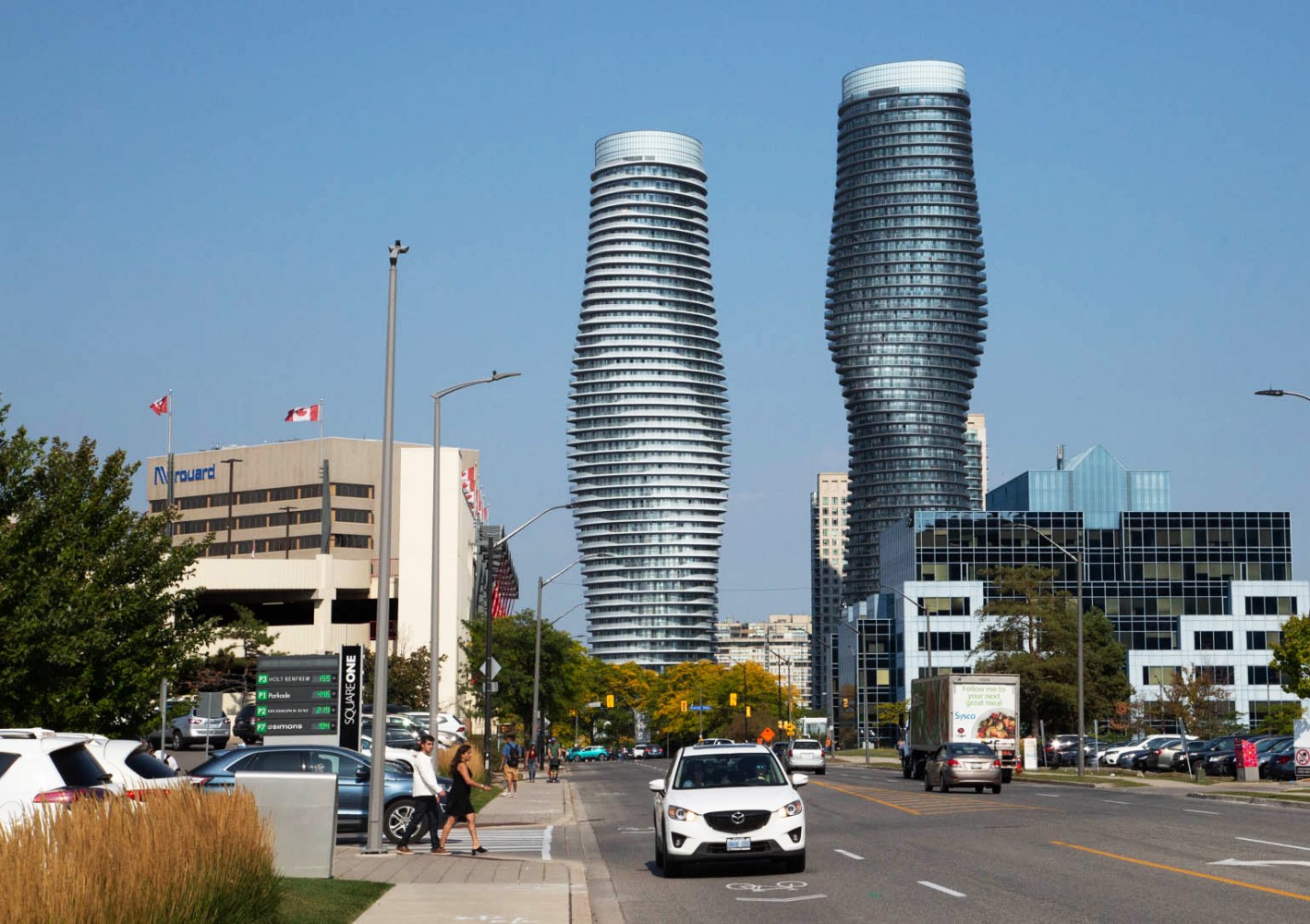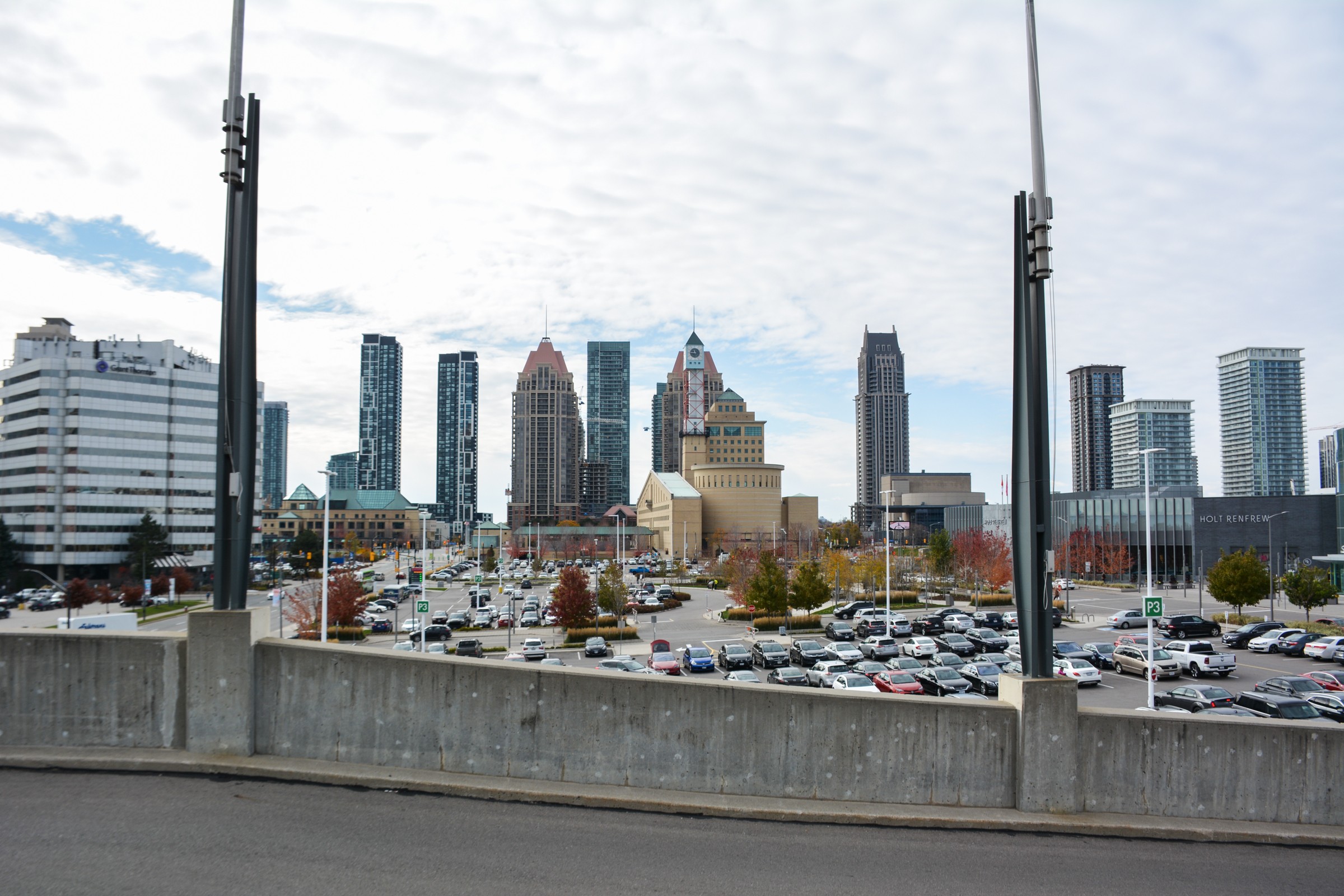
Pandemic won’t slow down Mississauga’s rapidly aging infrastructure
Mississauga is a young city, still in its adolescence.
It was incorporated in 1974 and brought together a series of towns on the outskirts of Toronto. By 2010 it had boomed to full build out. Now, with no more space to expand outward, it is attempting to reconfigure around transit and construct towers that reach for the sky.
The issue City Hall must contend with is the infrastructure supporting its future plans. It is maturing, rapidly, like a teenager desperate to move into adulthood.
The City of Mississauga owns 60 percent of all infrastructure located in its boundaries at a value of roughly $12.4 billion. This portfolio includes: $4.5 billion worth of stormwater assets, $2.9 billion in roads, $1.9 billion in buildings and $935 million worth of bridges.

Despite the impacts of the COVID-19 pandemic, the City of Mississauga still needs to find a way to pay for needed infrastructure repairs and prepare for future growth.
Every year, the bricks, mortar and asphalt grow older. Wear and tear are catching up and many elements are in concerning condition. A document on the City’s website states 20 percent of Mississauga roads are rated as “poor”, along with 13 percent of City buildings.
A significant portion of every budget is dedicated to attempting to stop this rot. Sixty-six percent of Mississauga’s capital program is targeted at state of good repair projects, with 33 percent of all capital requests in 2021 specifically for roads.
Current state of Mississauga's core assets.
The situation is so pressing that, even within a COVID-19 budget designed to minimize cost increases for residents, funding must continue to flow for buildings, bridges and roads. Two percentage points of Mississauga’s proposed 2.7 percent operating budget increase are to maintain an infrastructure levy, money used to paper over the cracks.
“Staff have worked to ensure that we are moving forward in a responsible way,” Gary Kent, commissioner of corporate services and chief financial officer, wrote in the City’s 2021 budget document. “Continuation of the two percent infrastructure levy is recommended as foregoing the levy would result in a loss of $90 million in revenue over 10 years, slowing the City’s ability to renew and build infrastructure even further.”
Even with the levy, Mississauga is in trouble.
The City’s infrastructure gap grew a further $17 million last year, hitting a total of $291 million. The gap represents the difference between the annual depreciation of City infrastructure based on its replacement cost and the funding that has been put aside for those projects.
The problem has been growing worse over much of the last decade. Six years ago, Mississauga had an infrastructure gap of $60 million; in the 2020 budget document, staff predicted it would grow to $309 million by 2029. Over the past two years, it has increased by $16 million and $17 million, suggesting that prediction could be eclipsed far earlier.
“The two percent infrastructure and debt repayment levy assists to reduce the gap,” a City spokesperson told The Pointer. “However, annual inflation related to construction generally exceeds two percent, so the two percent levy on its own is insufficient to close the gap. Additional funding is required from other levels of government.”
A report presented by the Association of Municipalities (AMO) in 2018 hits on one of the root causes of this impossible infrastructure question. Over the past half-century, cities and regions have become responsible for far more infrastructure than ever before. The change has taken place as other levels of government have downloaded responsibilities as low as they can go: to cities. Advocates argue this shift has not been matched with the revenue tools necessary to pay for all the added municipal responsibilities.
A graphic produced by AMO in 2018 shows the municipal share of infrastructure almost doubling between 1961 and 2014.
The federal and provincial governments use mechanisms including the Gas Tax and the Investing in Canada Infrastructure Plan (ICIP) to make up the difference for towns and cities. The rapid decline of municipal infrastructure shows it simply is not enough.
“Every year the federal Gas Tax Fund delivers $2 billion directly to 3,600 municipalities for infrastructure renewal,” a 2019 Canadian Infrastructure Report Card by FCM explains. “Its challenge is its scale. Every year, it leaves key projects unfunded.”
Mississauga exemplifies this problem. “The age profile of the City facility portfolio (including the buildings within the Realty Services property portfolio) indicates that approximately 52 per cent of the inventory area is more than 30 years old,” a troubling line in its 2021 budget document reads.
At 20 years old, most buildings need higher investment and, at 25 years old, “functional loss occurs” leading to a need for major redevelopment.
Faced with a rapidly widening infrastructure gap and insufficient levies, Mississauga has been forced to take out debt. It has also prioritized what work simply cannot be ignored, and what can, leaving a wealth of projects unfunded.
Decades of low or zero percent tax increases under former Mayor Hazel McCallion, in charge for 36 years, created much of today’s problem. Instead of having fully funded reserve funds and the benefit of a shorter list of unfunded projects (because the backlog was avoided through proper tax supported funding in the past) the problems have stacked up for two decades.
The City first issued debt in 2013 and, in the years that followed, its debt has grown to a total of $341 million (and a balance of $231 million). A further $610 million of debt will be issued over the next ten years, resulting in an outstanding debt figure of $343 million by 2030. As the graph below shows, the City is planning a much more aggressive debt repayment schedule over the next decade.
Mississauga's total debt will exceed $900 million by the end of the decade.
It’s a situation with few easy answers and no quick fixes. In an attempt to manage, Mississauga has developed a multi-pronged strategy. This includes an asset management plan to get a better handle on the quantity and state of its many assets; advocating to other levels of government and working “to continue to tell the infrastructure challenge story that faces all municipalities across the nation,” the budget document explains.
The more frustrating strategy for residents is a brutal task of deciding what projects receive the limited funds. The City’s budget describes this process as “focusing on critical components of infrastructure with safety as a priority”. In the 2021 budget document, it has resulted in an unfunded project list worth $1.3 billion across the next decade.
The reality was presented to councillors during the first round of budget discussions late last month, which are now on hold until decisions are made at the Region of Peel. Mississauga is expected to pass its budget early in 2021.
The City of Mississauga does not produce a full list, but offers a snapshot. Vital fire station renovations, road rehabilitation and waterfront development are among the areas without funding. As long as these projects remain unfunded, they are empty promises council has failed to deliver to its residents.
City staff say they plan to ask councillors to review the list in June 2021. “We are in the process of modelling out all of the both funded and unfunded things that we want to do and I think council will have to make decisions as to whether they’re all practical,” Jeff Jackson, director, finance and treasurer, told The Pointer.
A list of the unfunded projects in Mississauga, including vital repairs to its poorly maintained fire stations.
In their framing of the 2021 budget, staff have been clear: the document is a placeholder until residents and officials can get some clarity and stability in relation to the COVID-19 pandemic. The vast majority of new projects have been put off, transit hours knocked down and new staff hires delayed, while sweeping lay-offs of non-essential, mostly part-time employees have been made.
Even in the face of a global pandemic, the effects of time don’t stop.
While it may feel to many like our lives have been on hold, Mississauga’s roads are still a year older. It’s buildings are too. Compounding the problem is a relatively healthy development industry, which means construction cost inflation is unlikely to take a break.
With all the pressures, staff have maintained the two percent infrastructure levy. It remains to be seen if it will be enough, as increased debt and a growing infrastructure gap are the headwinds in front of an otherwise promising future for Mississauga.
Email: [email protected]
Twitter: @isaaccallan
Tel: 647 561-4879
COVID-19 is impacting all Canadians. At a time when vital public information is needed by everyone, The Pointer has taken down our paywall on all stories relating to the pandemic and those of public interest to ensure every resident of Brampton and Mississauga has access to the facts. For those who are able, we encourage you to consider a subscription. This will help us report on important public interest issues the community needs to know about now more than ever. You can register for a 30-day free trial HERE. Thereafter, The Pointer will charge $10 a month and you can cancel any time right on the website. Thank you.
Submit a correction about this story


